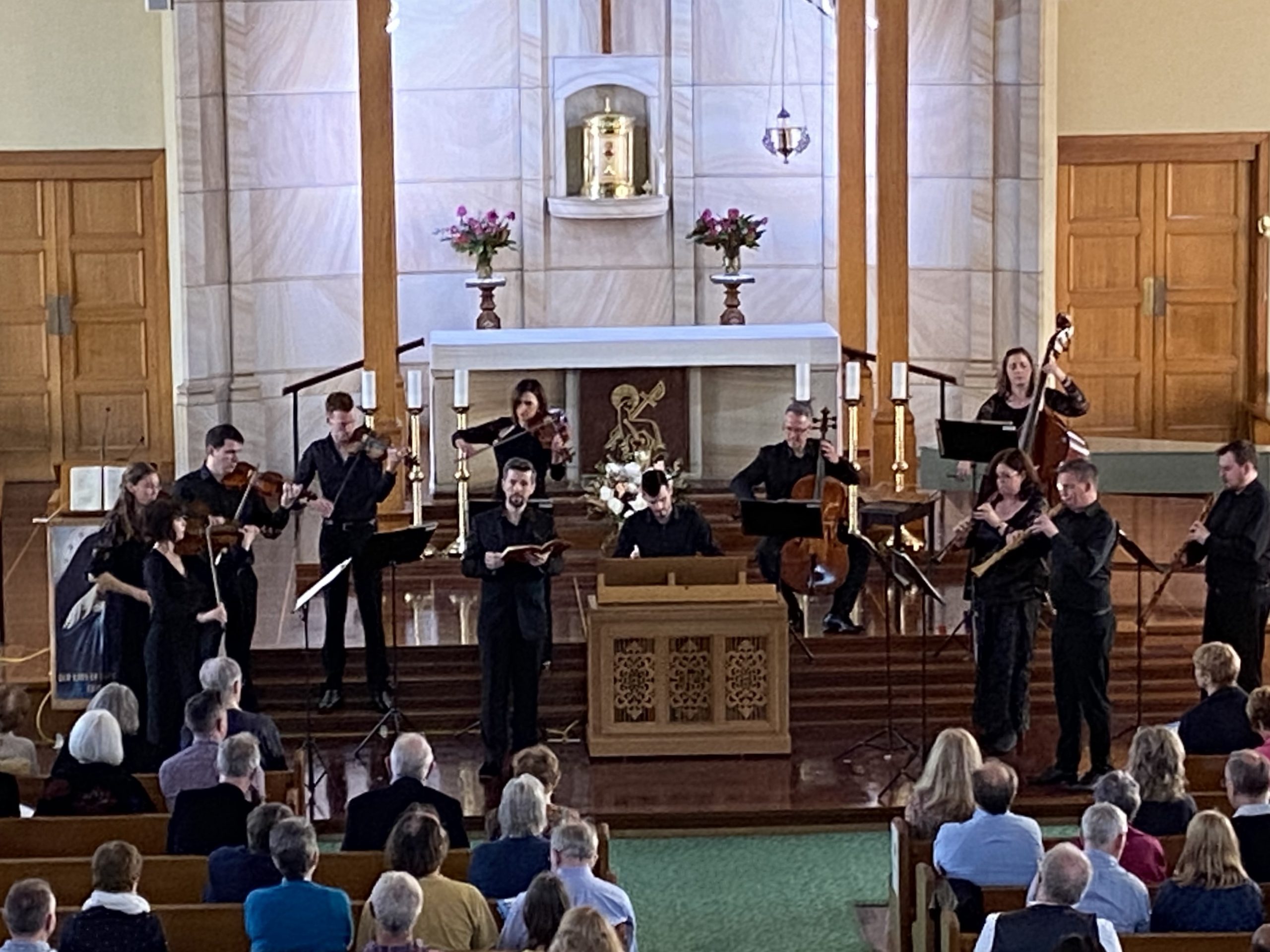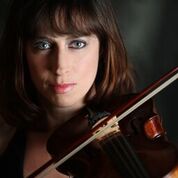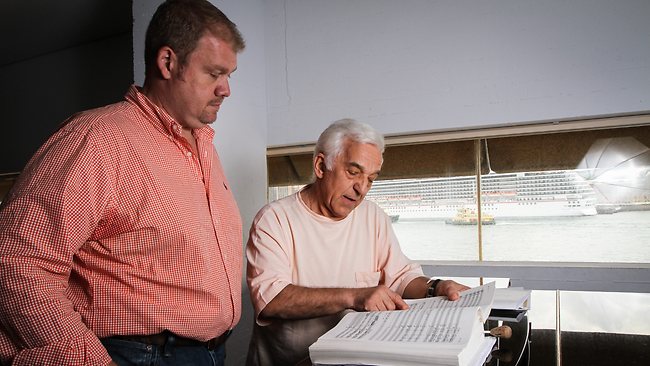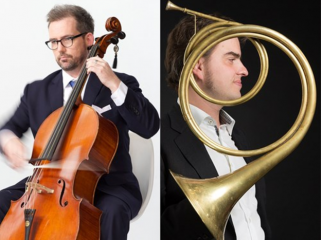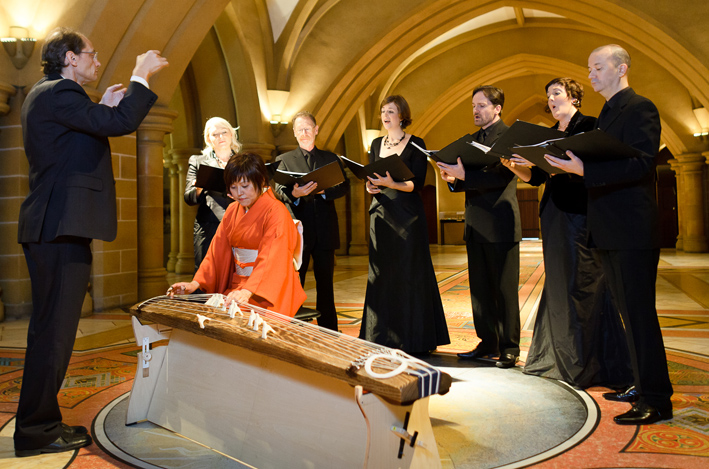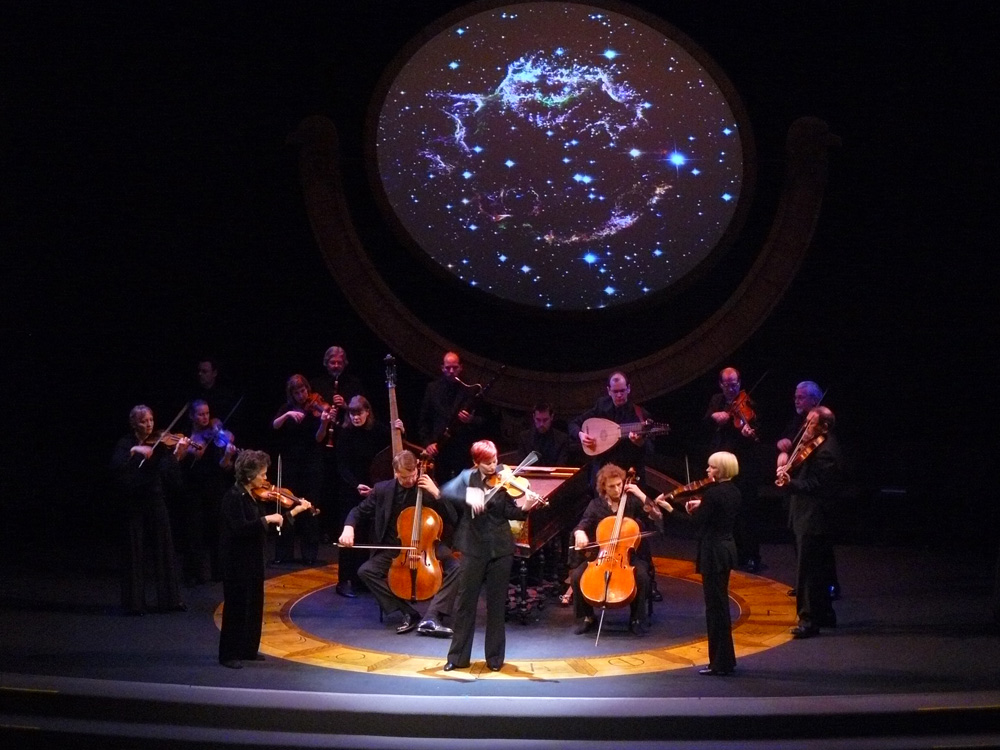Concert Review: In Bach’s Orbit/Bach Akademie Australia/Harcourt
In Bach’s Orbit/ Bach Akademie Australia/ Russell Harcourt
Our Lady of Dolours Church, Chatswood
25 September, 2022
Bach Akademie Australia’s presentation of In Bach’s Orbit ventured into the considerable realm of composers whose work intersected with that of Johann Sebastian Bach, reaching back in time to start with the birth of Dietrich Buxtehude in 1637, nearly half a century before Johann Sebastian was born. Joining the 11-strong instrumental ensemble led from the violin by founding Artistic Director and soloist Madeleine Easton, was counter-tenor Russell Harcourt, stepping in for the late counter-tenor Max Riebl who died so prematurely earlier this year and to whose memory the concert series was dedicated.
The program explored the versatility and experimentation of the times as forms, sounds, sound combinations, instruments and their techniques were developing apace. Suitably, the program opened with a lament Ach, dass ich Wassers gnug hätte for alto, strings and organ, by Bach family elder, Johann Christoph Bach, a cousin of J S Bach’s father and one of the most highly respected of J S Bach’s numerous musical ancestors. Harcourt’s interpretation was poignant, but understated and reverential, expressing the simplicity of the Lutheran style, its steady rhythm punctuated by flutters of syncopation and dotted rhythms. The second part picked up the mood with more complex rhythms and the descending passages of the vocal line imitated by the strings playing in thirds, before returning to a sparsely ornamented da capo section.
Organist Nathan Cox rendered a fine, virtuosic account of Buxtehude’s Praeludium in G minor BuxWV 163 on the chamber organ. J.S.Bach was greatly taken by the music of Buxtehude and aged 20, walked 250 miles from Arnstadt to Lübeck to hear the 68-year-old Buxtehude play. An astute choice, this piece is unusual for several reasons. It is written for manuals only and although titled as a Praeludium, it moves through several different forms calling on toccata and fugal sections, dance-like rhythms and changes of time signature and tempi, enunciating the northern German compositional style known as the stylus phantasticus espoused by Buxtehude. The stylus phantasticus, true to its name, offered the ultimate form of exploration as it was tied to no prescriptive structures, harmonic expectations, or text. Cox moved nimbly from the clearly defined alternating free and fugal sections with ease, a format with J S Bach often adopted.
Antonio Vivaldi’s Nisi Dominus, a dramatic and adventurous 9-movement setting of Psalm 127, was splendidly realised by Harcourt and the ensemble, comprising violins, (Easton, Simone Slattery, Rafael Font and James Armstrong), viola (Marianne Yeomans), cello (Daniel Yeadon), double bass (Chloe Ann Williamson), theorbo (Tommie Andersson) and organ (Cox). The nine movements were deeply expressive, from the continuo arias Vanum est vobis and Beatus vir – feasts for the voice and lower strings, through the arpeggiated figures of Sicut sagittae, to the long, floated lines of Sicut erat in principio. Three movements lay claim to being the most exceptional of the nine and it is indeed difficult to nominate which one takes the crown, be it the melismatic Surgite, written as an accompanied recitative, Cum dederit with its muted ostinato pedal points taking on rising crunchy chromatics; or the achingly beautiful and brooding Gloria patri an exquisite dialogue between voice and the rare viola d’amore, played by Easton, its lower layer of strings ringing out in sympathy with its seven strings.
Telemann’s Concerto for 4 violins in G major TWV 40:210 in four movements is one of four major concerti written by Telemann to be performed by four violinists when an orchestra or continuo section might not have been available. It is a charming piece, delivered with great empathy and camaraderie amidst the four exponents, Slattery, Font and Armstrong led by Easton. The first movement, whimsical and improvisatory with much interplay led to an up-tempo second movement fugue, an expansive third movement Adagio and a buoyant Vivace.
Pachelbel’s Suite No 4 in E minor celebrates the popular dance forms of the time in its five movements. Rich in melody and pulsing with the beats of the Courant and Ciacona, there was exceptional playing from Simone Slattery in this quartet formed with Easton, cellist Daniel Yeadon and Nathan Cox, this time playing the harpsichord.
Finally, the music of the man whom this project is all about, the cantata for solo alto, Geist und Seele wird verwirret BWV 35. The ensemble expanded to include oboes played by Adam Masters and Fiona McMillan, with Kailen Cresp playing the lower-registered taille. Immediately there was a deep sense of warmth, satisfaction and the recognition that whilst many composers might have been ‘in Bach’s orbit’ none of them could convey the sense of grandeur, mystery, the depth of emotion and intellectual complexity that is integral to the music of J S Bach. Easton has added more interesting elements to the program by selecting this cantata, with its two Sinfonias, exceptional length – it contains three arias and two recitatives – and obbligato organ part.
Highlights included Cox’s virtuosic organ playing, Harcourt’s jubilation in the aria Gott hat alles wohlgemacht, the motoric second Sinfonia and the fleet-footed closing aria, Ich wünsche nur bei Gott zu leben.
The instrumentalists were singular both as individuals and in ensemble. There were moments when Harcourt was dominated by the instruments notably in his lower range, but his middle and upper ranges were thrilling, sweet and lucid with nimble athleticism and enviable cantabile, straight toned and pure. This was an intelligent and entertaining line-up from an expert performer well-versed her specialist repertoire, proving yet again that there is always something new in the old.
Shamistha de Soysa for SoundsLikeSydney©

